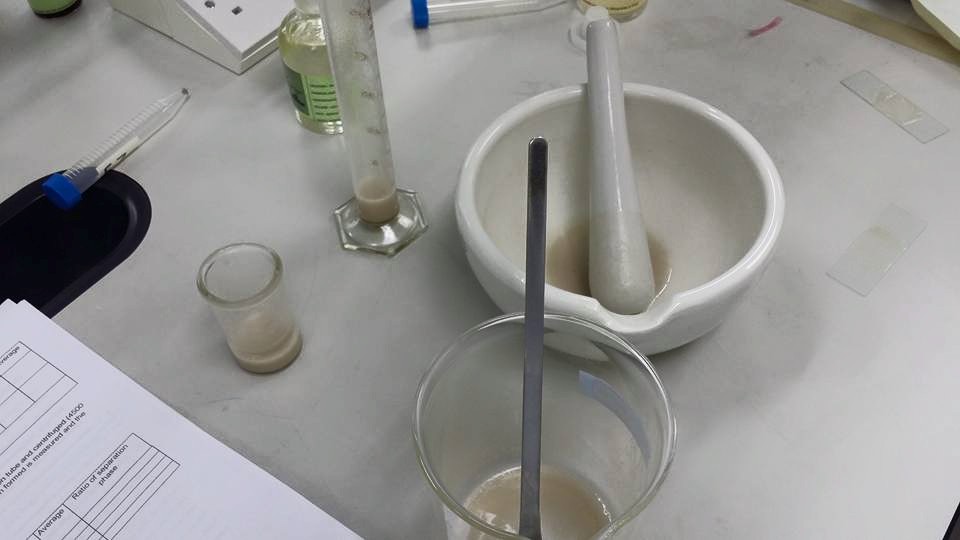Table of Contents
Active medicament:
- Water soluble active medicament ex: vitamins, antibiotics, laxatives etc
- Oil soluble active medicament ex: vitamins, laxatives etc.
2. Additives:
Oil phase:
- Fixed oil: castor oil, olive oil, cod liver oil, shark liver oil, arachis oil, cotton seed oil.
- Mineral oil: Liquid paraffin, Hard paraffin.
- volatile oil: Eucalyptus oil, oil of winter green, turpentine oil, neem oil, benzoyl benzoate.
- Oleoresins: Tincture of myrrth, tincture of balsam of tolu, tincture of lobelia, extracts of colophony.
Aqueous phase:
Purified water, distilled water, aromatic water, viz, Chloroform water and cinnamon water.
Emulsifying agents:
These are the agents which are used to miscibilize two immiscible phase by reducing the interfacial tension between the phase or by increases the viscosity their by preventing the coalescence of the dispersed globules agents. Emulsifying agents are two types:
- Primary emulsifying agents: These produced good emulsion.
- secondary emulsifying agents also called as emulsion stabilisers: These produced coarse emulsion but when used with a primary emulsifying agents the resulting emulsion has improved stability ex: Tragacanth.
Classification of emulsifying agents:
A. Natural emulsifying agents:
Polysaccharides ex: Acacia, tragacanth, sodium alginate, starch, pectin and agar.
Sterol containing ex: Bees wax, wool fat, wool alcohol.
B. semisynthetic emulsifying agents: Methyl cellulose, Carboxymethyl cellulose (CMC).
C. Surfactants (surface active agents)
Anionic surfactants:
- Alkali metal and ammonium soaps ex: Sodium potassium or Ammonium salts of long chain fatty acids such as oleic acids, stearic acid and ricinolic acid; preformed soap such as soft soap.
- Soaps of divalent and trivalents metals ex: Calcium, Magnesium, Aluminium and zinc salts of fatty acids.
- Alkyl sulphates ex; Sodium lauryl sulphates, sodium dodecyl sulphates, sodium cetosteryl sulphates.
- Alkyl phosphates: Sodium lauryl phosphate, sodium dodecyl phosphates, sodium cetosteryl phosphates.
Cationic surfactants
ex: Quaternary ammonium compounds such as cetrimide: cetrimide emulsifying wax.
Non-ionic surfactants:
- Glycol and glycerol esters ex: Glyceryl monostearate, propylene glycol monosearate.
- Sorbitan esters ex: sorbitan monolaurate, sorbitan monoleate, sorbitan monostearate.
- Macrogol esters ex: Macrogol stearate 400, Macrogol stearate 200e0.
- Macrogol ethers ex: PEG 1000 monocetyl eher
- polysorbates ( tweens) ex: polysorbate 20, 60, 80.
- polyalkols ex: polyoxyethylene dervatives of polyoxypropylene.
- polyvinyl alcohols ex: polyvinyl acetate.
- Higher fatty acids ex: cetyl alcohols, steryl alcohols, cetosteryl alcohols.
D. Finely divided solids ex: Bentonite, aluminum and magnesium hydroxides, colloidal silicon dioxides.
E. Others ex: saponins, carbomer.
Stabilisers
- Antioxidants ex: sodium sulphates, sodium metabisulphates, BHT, BHA, Tocopherol derivatives.
- Antimicrovial agents: ex sodium benzoates, methyl and propyl parabens, chloroform, chlorocresol.
Organoleptic additives:
- Flavouring agents ex: vanilin, Benzaldehyde, perfumes obtain volatile oil.
